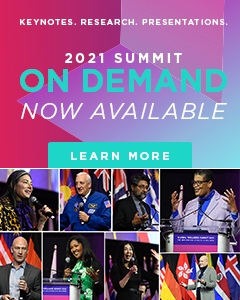Wellness Music
From the music industry pivoting to “wellness” music to new technologies that capture our biometric data to create personalized, healing soundscapes—music is undergoing a sudden wellness transformation.
By Beth McGroarty
We all self-medicate through music: We’ve all got our “I’m stressed” or “I need energy” playlists. But most people don’t fully grasp just how much they depend on music to manage their emotions or just how powerful the medical evidence for music therapy is. Studies reveal[1] that not only are humans hardwired for music, but they also agree that no other stimulus positively activates so many regions of the human brain (from the amygdala to the hippocampus)—with unique powers to boost mood and memory. But when you think of formal “music therapy,” it conjures up dowdy, dusty greige offices in some school or medical outbuilding, with patients wearing Soviet-era headphones.
Suddenly, something big is happening. Music as an intentional therapy is being radically reinvented. Music is emerging as one of the hottest trends in wellness, and wellness concepts are shaking up the massive music industry. “Wellness music” is being born, and the trend takes so many forms. Funding for medical studies on music’s impact on the brain is really heating up, with researchers using biofeedback, AI and machine learning to identify how music’s structural properties (such as beat, key, chord progression and timbre) specifically impact biometrics like heart rate, brain waves and sleep patterns—so they can develop music as precision medicine for everything from pain to PTSD.
The mainstream music industry is going through a wellness transformation: from an explosion of healing playlists on the big streaming sites such as Spotify to new artists and audiences for ambient and “New New Age” music to musicians incorporating all kinds of wellness experiences into their concerts. The newest and biggest meditation apps are fast morphing into wellness music apps, with goliaths such as Calm even planning to become a whole “new kind of label” for artists to launch music for wellbeing.
One of the most provocative developments: the rise of “generative,” AI-powered music apps and technology platforms that pull your biological, psychological and situational data to create an utterly unique, custom-made-for-you, always-changing soundscape—to improve your mental and physical health any time you want to tune in.
And while the megatrend of ancient sound therapies (from gong baths to Tibetan singing bowls) will only rise at wellness studios and travel destinations, we’ll see more experimentation with music and acoustic experiences at both mainstream and wellness travel destinations. How about a “deep listening” excursion in the deepest rainforest with an acoustic ecologist?
Given music’s powerful impact on our brains and bodies, it’s extraordinary how little innovation there has been around intentionally designing music and sound experiences that could actively, positively change our mood, health and performance.
Change is here. Music created (and listened to) as intentional medicine will be a big trend in 2020 and beyond. It’s not about giving up your Beatles or Beyoncé fixes solely for biofeedback-based soundscapes— it’s about seeing music’s health and wellness potential anew, with far more “wellness music” options: new technologies, new experiments and new experiences.
FUELING THE TREND
Evidence that music is strong medicine—with more studies un-riddling its unique brain mechanisms ahead
Stringent meta-reviews show music’s eyeopening impact on depression[2], anxiety and pain[3]—and everything from its power to improve social skills in kids with autism[4] to being a stronghold against Alzheimer’s, as memories of music don’t get lost to the disease[5]. A key, recent focus has been more hospitals around the world using music therapy before surgery, as new studies[6] like one from the University of Pennsylvania reveal that music is as powerful as a sedative in reducing patients’ anxiety.
More research is now untangling the brain mechanisms involved in listening to music and investigating the right dosages: The British Academy of Sound Therapy just found that 78 minutes daily is optimal for improving mental health. And there’s more research into evidence-based acoustic sound design: what frequencies (measured in hertz), decibels, beats, tones, etc. have the most powerful impact, and for what outcomes.
The potential of music therapy is so immense and untapped that the National Institutes of Health (NIH) just awarded $20 million[7] to fund a Sound Health Initiative that will undertake studies to uncover music’s mechanisms of action in the brain, as well as to identify a host of new interventions, from treating symptoms of pain, PTSD, Parkinson’s disease, stroke, autism and dementia to music’s impact on childhood development. This is a huge step: serious money for serious science to understand music’s serious potential for improving human wellbeing.
Culture shift: Exhausted by screens, we’re taking sanctuary in sound
With the average person now spending 6.5 hours+ a day in front of screens[8] — bombarded by bad news, endless work, and social media strutting—there’s a distinct shift underway: a retreat from visual/digital culture into music and sound. This flight into music is being led by millennials/Gen Z: A recent global Spotify survey[9] of 15- to 37-year-olds found that one of the five defining traits of this young demographic is that they (56 percent reporting) “use audio as an escape from their screens,” and audio is a “huge part of their everyday lives.” It’s not just the kids: A recent Sonos global survey[10] showed the many ways all people use music to boost their wellbeing: Roughly 75 percent report they listen to music to reduce stress, and that listening to music is key to producing their best work.
You see the flight from visual to audio culture—from our exhausted eyes to our newly open ears—in the skyrocketing adoption of podcast-listening: Thirty-six percent of the world’s population has listened to podcasts in the last month[11]. You see it in new music listening centers, like the rise of cool, new “listening bars” that mix community and cocktails with big vinyl listening libraries, so huge in Toyko at places such as Baobob or Paper Moon, and spreading around the world to places such as Bar Shiru in Oakland, California, or Tokyo Record Bar in New York City. You see it in hot real estate trends, including the rise in “listening rooms,” a home space where meditation can be taken with music, and with predictions[12] that these wellness rooms loaded with state-of-the-art audio/ AV equipment are “the new home theaters.”
ASPECTS OF THE TREND
Stream your wellbeing: The music industry pivots to wellness
From an explosion of healing wellbeing playlists on the big streaming sites to new, big audiences for ambient and “New New Age” music to musical artists incorporating all kinds of wellness into their concerts, the mainstream music industry is experiencing a serious wellness transformation. “Wellness” is becoming a new mode of listening— beyond the artist or genre.
Spotify, Apple Music, YouTube and other streaming sites are increasingly serving up playlists that focus on mood-changing, stress-reducing, help-people-sleep, focus-enhancing, meditative, improve-your-workout music and soundscapes—making wellness music a core homepage channel. There are now endless loops of trance-y and tranquilizing music or channels for specific wellbeing intentions, and they boast millions of subscribers. Spotify is spawning “chill playlists” such as “Deep Focus,” “Peaceful Piano” and “Ambient Chill.”
Brand-new apps such as myndstream (from the founders of the entertainment group that made emotional music for shows such as Game of Thrones and House of Cards) create music to specifically drive daily wellbeing goals, with tracks for focus, meditation, movement, relaxation and sleep, that can be accessed on Spotify and Apple Music.
Both ambient and New Age music are finding big new audiences, as more people seek immersion in blissed-out sonic spaces and sound healing rather than power anthems or raps. NPR recently explored[13] how ’60s/70s New Age music (once cringe-inducing for many, with its sounds of birdsong and ethereal synthesizers) is seeing a cool new wave of artists and approaches, such as Los Angeles’ Matthew David and Kaitlyn Aurelia Smith.
More artists are incorporating experiences that you would find at a wellness resort into their performances: artists such as Erykah Badu and bands such as Sigur Rós are having mass sound baths at their concerts, while Jhene Aiko’s recent concerts included guided meditations, sound baths, mantra-chanting and aromatherapy. The music + wellness festival just continues to surge. The behemoth music fests such as Latitude or Glastonbury keep adding more wellness areas/experiences, the latter recently featuring everything from indigenous spiritual elders to workshops on ayahuasca. In the future, we will see more live music meditation and full-blown “audio-wellness” festivals, such as Soft Landings planned by Morning Gloryville Founder, Samantha Moyo.
WellMusicTech: A new era of personalized music as precision medicine
New technologies and apps are radically reimagining how music can become a deeply personalized precision medicine. A pioneer, geared toward the healthcare space, has been Project Sync[14], which worked with top neuroscientists and musicians to develop personalized musical therapeutics for everything from pain management (given the deadly opioid crisis) to improving sleep. A spinoff from MIT’s Media Lab, Project Sync performed trials on how things such as tone, beat and rhythm exactly impact the brain and body. Purchased by Bose in 2018, a company then making moves in the acoustic healthcare space, it’s unclear for now what Project Sync’s future is. But it’s also clear that companies will step in and solve personalized musical interventions for traditional healthcare.
Your biological & psychological data generates an adaptive wellness soundscape to improve your wellbeing…all day
“Generative music” is music that largely nixes the composer and “song” from the process, to create compositions that endlessly evolve according to a preprogrammed set of rules—a concept pioneered by John Cage in the ’50s and Brian Eno in the ’60s/70s (whose music calmed David Bowie). It’s taking on new meaning and applications in our digital age.
One of the most fascinating examples of the new “wellness music” is the rising wave of generative music apps and streaming services that create tailor-made, always-adapting soundscapes, using algorithms and your own biofeedback, to improve your wellbeing. Their thesis: You’ve got the healing music in you, and when combined with smart algorithms and AI, these custom sound frequencies can function like an always-there playlist you can turn to if you need to de-stress, focus or sleep.
Berlin-based Endel is the headline-grabbing leader. The app pulls data from your phone (such as weather, time of day and your location) while pulling biometric and psychometric data (from your heart rate to step data, etc.) from your smartwatch to create an endless sonic wellness composition. The Endel algorithm is based on pentatonic scales (to riff off simple sounds), people’s biological clocks and sound masking (to blanket distracting sounds)—and is informed by the psychological theory of ““Flow[15]” (that state of optimal “being in the zone”) developed by psychologist Mihaly Csikszentmihalyi (with whom Endel collaborated). So whether you’re deadlocked in traffic after an awful workday or heading out to run, Endel kicks off an ambient soundscape that just keeps blossoming as your bio and environmental input provides more data, evolving to help enhance your body and mind. It’s an endless wellness tune that’s never the same twice.
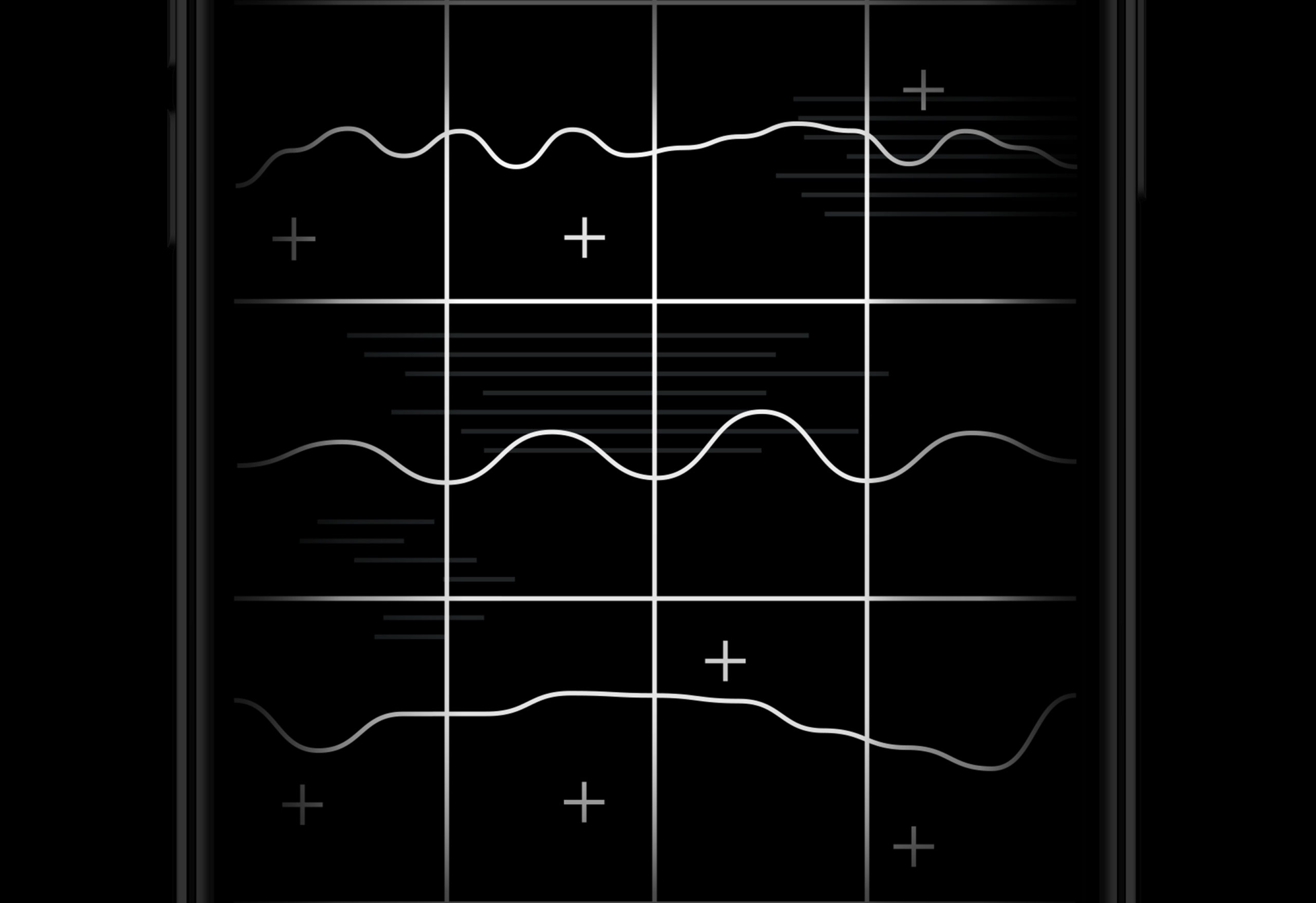
In 2019, Warner Music famously signed Endel-algorithm-generated songs to the first nonhuman record deal. Singer/ producer Chaz Bear, known as Toro Y Moi, collaborated with Endel and Smartwater to create music with Endel’s algorithm and noted: “This is going to be an interesting platform to bring artists into the realm of wellness and bring wellness to the public[16].” The company (who has attracted big investors such as Amazon’s Alexa Fund and Japan’s Avex Ventures) has ambitious plans to bring Endel soundscapes to all the everyday spaces: your home, hotels (certainly perfect for wellness destinations), retail spaces, galleries, workplaces, etc.—and are already in talks with automakers and airlines.
There’s so much interesting activity on the adaptive, generative “wellness music” front. Generative musician Holly Herndon’s album Platform created songs designed to trigger (that hot wellness trend) autonomous sensory meridian response—while her new album PROTO involved creating duets with a generative AI neural network that she taught to sing named SPAWN. Mubert, the first generative streaming service, lets listeners choose from intentions such as “Study,” “Dream,” “Relax” or “High” to unleash an always-unique sequence of electronic healing sounds.
Music start-up Weav retains the artist/song but seamlessly adapts the tempo (between 100–240 beats-per-minute) to sync the music to anything, as it says, “from running to skiing and—yes—sex!” Its first app, Weav Run, reengineers songs so when your foot hits the ground, the beat matches up: speed up, so does the song. DropLabs recently released EP 01, a sneaker that takes the audio playing through your headphones and converts it into vibrations that stimulate the nerve receptors in your feet. These are, essentially, “wellness remix” technologies, as moving in sync with music/beats is associated with boosted endorphins and decreased fatigue and pain.
Meditation apps? They’re morphing into wellness music apps
There are thousands of meditation apps, and the market is growing like mad: The top-10 apps saw 40 percent growth year-over-year[17], and millions more new users tuned in for some mindfulness, stress-relief and help sleeping within the last year. A clear trend: The newest and most successful meditation apps are fast becoming wellness music apps.
One of the new apps, Wave, foregoes the old whispery, guided meditations for an all-wellness-music platform. The Wave kit combines headphones and a pulse-vibrating foam bolster for a multifrequency meditative experience. Users tune into the music library and, because it’s Bluetooth-enabled, they breathe to the beat of each track. It was specifically targeted at younger demos, and they surveyed consumers on what activities they most turned to for empowerment. Music ranked #1.
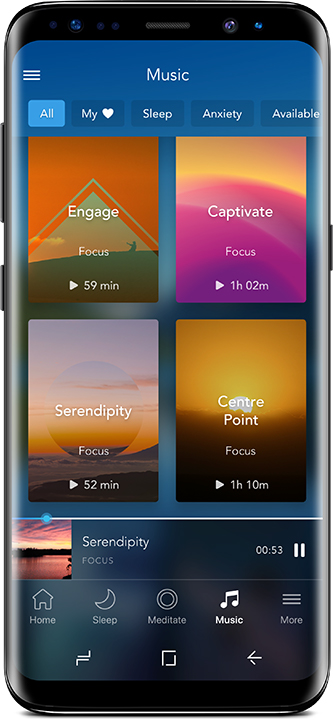
Mega-meditation app Calm (60 million downloads!), which hit $1 billion unicorn status in part because it expanded its focus from meditation to sleep (with its famed celebrity-read “sleep stories”), is evolving into a “wellness music” platform. Calm’s incredibly popular “Sleep” channel features exclusive compositions by alt-rock stars such as Moby, Icelandic band Sigur Rós, Sam Smith and Sabrina Carpenter designed to work as adult lullabies and musical sedatives. In 2020, Calm’s working with artists such as country music star Keith Urban—and with artists across musical genres, from pop to hip-hop—to create creative, long-form “Calm” music of all kinds. It’s wellness music tracks have already been streamed 200 million times.
In an eye-opening piece[18] in the Los Angeles Times, Global Wellness Summit trendspotter Rina Raphael, explains how intensely Calm is focused on music and the music industry. It plans to go beyond meditative versions of pre-existing music to become a whole “new kind of label” for artists to launch creative, long-form music for wellbeing—and it’s investing in a music-as-brain enhancement audio library that meets people’s everyday needs: music to de-stress from work or music to boost productivity and focus. And it’s not just music: Calm is “coming for Hollywood,” planning wellness-focused and relaxation-inducing original TV programming (and even films), and is already in talks with production and streaming companies. The music industry. The film and TV industry. Hollywood. Wellness. You knew it was coming…
So many start-ups are engineering such wildly different things in the “wellness music” space.
Paris-based Mila (a 2019 star in Techstars’ Music Accelerator program) is gamifying and digitizing music therapy for children with neurodevelopmental disorders to make it far more engaging. Doctor-created Neuvana is launching Xen, earbuds that gently tone the vagus nerve (that activates the body’s resting and digestive functions) while listening to music. The new Plantwave device transforms the electrical conductivity of plants (whether your beloved houseplants or those you find in nature) into music, so you can hear them “sing.” Little sensors sit on the plant’s leaf and connect to your phone/laptop via Bluetooth. And while no research supports the idea that plants compose songs, the idea is to deepen the connection—to listen anew—to nature (more on that trend below).
More all-wellness-music centers
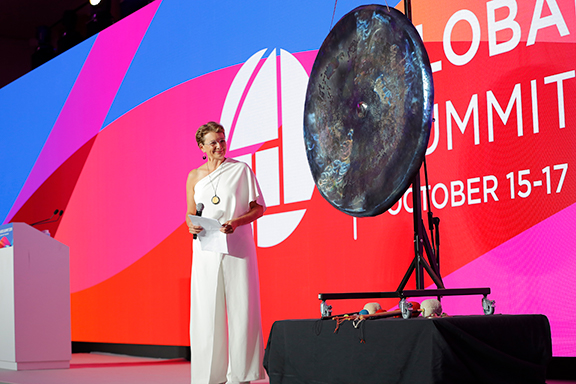
Sound baths and all kinds of aural healing ceremonies—using ancient instruments/ practices such as gongs, Tibetan singing bowls, drums, bells, chimes, harps, Aboriginal didgeridoos—have, of course, been an ongoing wellness über-trend, with these vibrating, meditative sonic journeys taking place at so many more spas, fitness/ yoga studios, wellness resorts and even mainstream hotels. Wellness destinations have become one blissful “gong show,” and the trend isn’t going anywhere. And we’ll continue to see more wellness destinations use more modern acoustic therapies such as binaural beats, where listening to different frequency tones in the left and right ears leads to a meditative brain state. More will offer biosonic repatterning, using tuning forks at the sonic ratios inherent in nature with the goal of realigning your nervous system’s frequencies. And more wellness centers/practitioners such as Michelle Cade of London’s Mind Like Water will put so many sound healing approaches under one roof, whether Ayurvedic sound therapy massage, soma board sound therapy, or CBD sound journeys…
More wellness music centers will take dramatically new approaches. Wavepaths, now in beta and at London popup Sound Space, brings an Endel-like experience to a physical place of community and sanctuary.
Neuroscientist Dr. Mendel Kaelen, formerly a lead researcher in the role of music in psilocybin therapy at Imperial College, has created AI-driven, adapted-to-you sound experiences: You nest in a padded egg chair, sensors gauge your biological and emotional states, and AI translates that data into a healing composition that courses through you by way of 21 surrounding speakers. Over time, it creates a profile of what you best respond to, and the company has hired a team of neuroscientists who will deploy fMRI brain scanning to measure the precise changes in the brain to boost their impact. The company has a vision to build big, communal spaces for its high-tech sound journeys all over the world.
New sound experiences will hit travel—from music-synched massage to “deep nature listening” with acoustic ecologists
We will see more experimentation with music and acoustic experiences at both mainstream and wellness travel destinations. If travel is all about “sights,” it will increasingly also be about music and “listening” experiences.
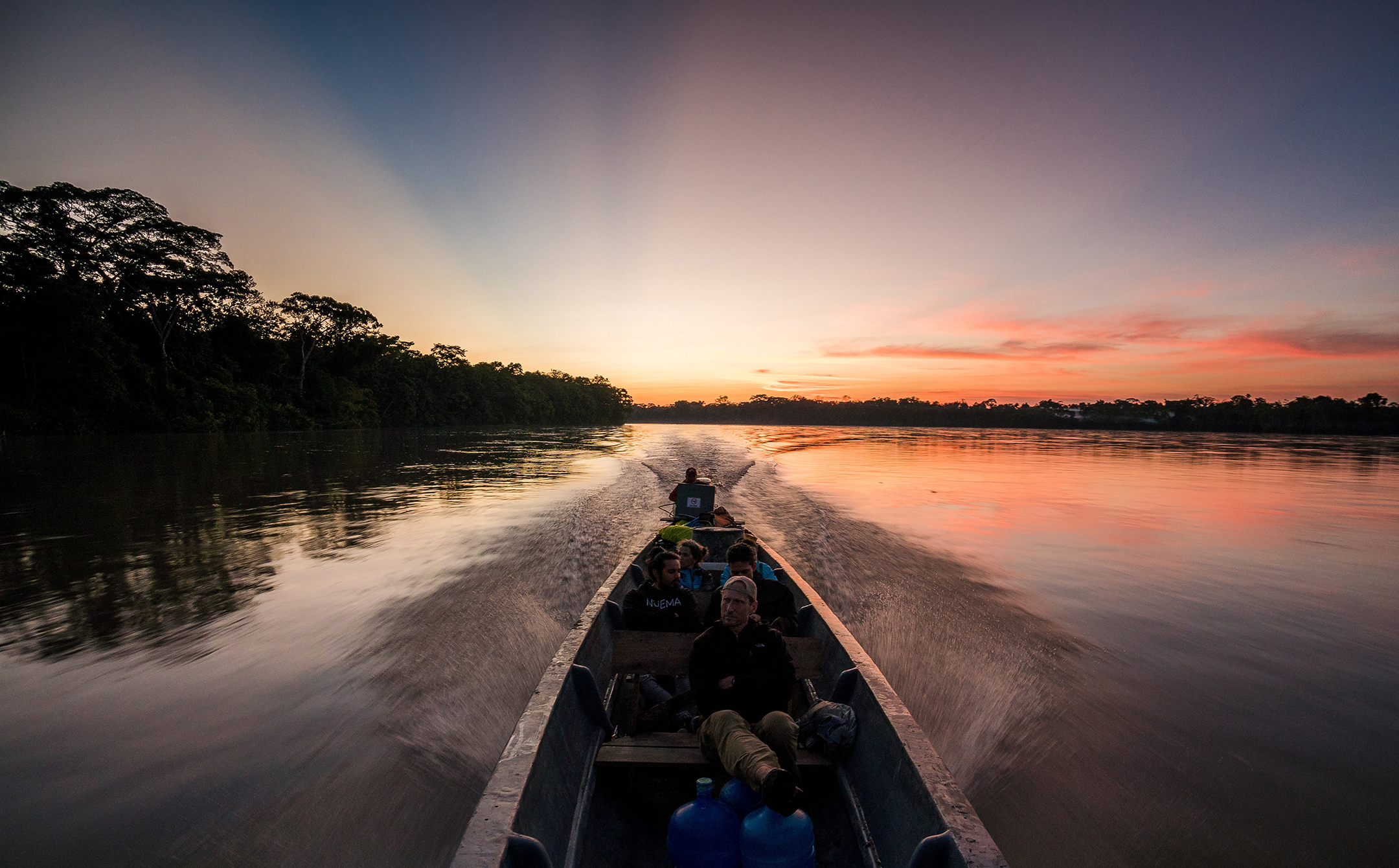
Way out in front in understanding the connection between music and wellness is famed, century-old Schloss Elmau, a wellness resort in a castle in the Bavarian Alps that merges so many wellness experiences with almost-nightly concerts from top musicians (whether classical or jazz) in its 300-seat concert hall. And the musicians “play to stay,” performing so they and their families can take a wellness break. (A model more wellness resorts should formally adopt.) How about a hot springs concert? At Australia’s redesigned Peninsula Hot Springs’ Bath House Amphitheatre, you can take in musical acts while floating in healing waters (and even when you dip under you don’t miss a sound: There are underwater speakers).
Mainstream hotel brands chasing music-mad millennials are going more in on music and wellness + music. Hip boutique brand Aloft is strengthening its relation to music and the music industry: All hotels have equipment for spur-of-the-moment concerts; they offer touring musicians discounts, and they recently hosted “Homecoming” concerts, where musicians such as BANKS and Troye Sivan played the Aloft in their hometowns.
You expect music from Hard Rock Hotels, but now they’re putting a musical spin on their wellness offerings: At their Rock Spas, you can now experience everything from a “Face the Music” sound vibration facial or a pulsating “Synchronicity” massage, where the soundtrack syncs up with the pressure and rhythms of the therapist’s hands.
Sanctuaries from noise pollution & forest “listening” will rise in wellness travel
Modern people, most living in loud, concrete cities, may not grasp the profound impact that noise pollution has on their health, and how noise from human encroachment on nature decimates wildlife and ecological systems. A powerful[19] in the New Yorker explained why noise pollution is poised to be the next public health issue, citing the studies showing that living in loud environments lead to more heart disease; high blood pressure; obesity; low birth weight, sleep, mood and focus issues; and cognitive impairment in children. Bruitparif, which monitors noise levels in Paris (in combination with World Health Organization data), published a report[20] that the average resident of Paris loses “more than three healthy life-years” from ailments caused by noise pollution. Western Europe loses at least “one million healthy years of life.”
And man-made noise, as we invade ever more natural spaces, is a wildlife and ecosystem killer. As Les Blomberg, founder of the Noise Pollution Clearinghouse, put it: “What we’re doing to our soundscape is littering it. It’s…acoustical litter—and, if you could see what you hear, it would look like piles of McDonald’s wrappers, just thrown out the window as we go driving down the road.”
As awareness about the disastrous impact of noise pollution on human health and the environment grows, we expect that the protection of natural spaces from noise will need to be put on any sustainability checklist—and that noise-pollution-free natural sanctuaries will become a new integer in wellness travel.
“Deep listening” in noise-protected nature looks to be a fascinating trend percolating in wellness travel. A striking example: Amazon Awakenings’ “Let it Happen” trip from Explorer X led by Gordon Hempton, an acoustic ecologist known as The Sound Tracker, who has spent 35 years seeking out the Earth’s rarest nature sounds. Hempton, along with the indigenous Cofab tribe, lead travelers on an “interactive sound journey” in the sonically beautiful, pristine Ecuadorean rainforest Zabalo River. It’s the first place on Earth designated as a “Wilderness Quiet Park” and completely off-limits to noise pollution. Travelers are led in “deep listening exercises” in the rainforest, learn how to recover their lost animal-alert, 360-degree hearing and listen intently to the natural “drumbeats, violins, raindrops and choruses” that fill the air around them.
You just hear more “hearing” in wellness travel programming. The new Azura Benguerra Island[21] and Azura Quilalea Private Island[22] in Mozambique revolve around a “Sounds of Africa wellness program” to help guests cultivate an acoustic hyper-consciousness of the place, with tribal drumming sessions, walking meditation to birdsong and silent beach breakfasts meditating to crashing waves.
THE FUTURE
If with some wellness approaches we can wonder if it’s just our desperate belief that’s the magic ingredient, with music, we personally experience the evidence: the deep impact it has on our mood. Music’s impact seems mysterious; it seems to go straight to our soul: In Sonos’ recent survey, 40 percent of people report that music makes them cry unexpectedly.
Given music’s incredible potential as a health intervention, and especially as a way to shift our emotions, it’s extraordinary how little innovation there has been around intentionally designing music and sound experiences that could actively and positively change our brains, bodies and performance. Change is here. Music created (and listened to) as intentional medicine will be a big trend in 2020 and beyond.
People will, of course, pit artist-created and song-focused music against new concepts such as biofeedback-based and neuroscientist-designed functional soundscapes. But this trend is not about giving up your Bob Dylan, Beatles or Beyoncé—and long live the power and profits of true artists and composers increasingly threatened in the current music industry. This trend is about seeing music’s health and wellness potential anew, with far more “wellness music” options: new technologies, new experiments and new experiences.
We need more high-quality research into the impact of specific music/sound experiences on specific issues/goals to make sure all these new wellness music applications actually work—and with grants such as the NIH’s, important research is ahead. And with so many new mental wellbeing tracking apps and solutions powered by emotion-tracking technology exploding the wellness world, we need to regulate who has access to this sensitive data.
With 5G hitting the tipping point in 2020, with its insanely fast wireless speeds and network power, it will make possible the rise of what you could call “wellness sensoriums”: intensely immersive environments (some using 3D and virtual reality) that will mash up evidence- and biofeedback-based music, sound, light and vibrational experiences—whether in our homes or at wellness destinations. At the same time, 5G’s unprecedented ability to suck people into multidimensional multimedia environments will lead to even worse screen addiction and exhaustion. More will flee into sound and music… and they will have so many more healing experiences to flee to.
ENDNOTES
[1]Human Brains Naturally Tuned to Hear Music by Sara Rigby, Science Focus, 20 July 2019.
[2]Music Therapy for Depression by Aalbers S, Fusar-Poli L, Freeman RE, Spreen M, Ket JCF, Vink AC, Maratos A, Crawford M, Chen X, and Gold C, Cochrane, 16 November 2017.
[3]The Effects of Music on Pain: A Meta-Analysis by Jin Hyung Lee, PhD, MT-BC, Journal of Music Therapy, Volume 53, Issue 4, 1 December 2016.
[4]Music Therapy for People with Autism Spectrum Disorder by Geretsegger M, Elefant C, Mössler KA, and Gold C, Cochrane, 17 June 2014.
[5]Study: Memories of Music Cannot Be Lost to Alzheimer’s and Dementia by Ned Dymoke, Big Think, 29 April 2018.
[6]Music Versus Midazolam during Preoperative Nerve Block Placements: A Prospective Randomized Controlled Study by Graff V, Cai L, Badiola I, et al, Regional Anesthesia & Pain Medicine, 2019; 44:796-79.
[7]New Grants Explore Benefits of Music on Health by Dr. Francis Collins, National Institutes of Health Director’s Blog, 19 September 2019.
[8]GlobalWebIndex data, 2018.
[9]Spotify’s first Culture Next Trends Report, 6/2019.
[10]The Science of Listening: How Brilliant Sound Makes for Better Living, Sonos, Inc., https://blog. sonos.com/en/brilliant-sound-survey/.
[11]Digital News Report, Reuters Institute, 2019.
[12]The New Wellness Amenities the Luxury Buyer Is Searching for by Sotheby’s International Realty, Inman, 23 September 2019.
[13]The State of New Age Music in the Always-On ‘Wellness’ Era by Harley Brown, NPR, 2 October 2019.
[14]The Sync Project’s Ambitious Quest to Use Music as Medicine, Fast Company, 11 March 2015.
[15]Flow: The Psychology of Optimal Experience by Mihaly Csikszentmihalyi, 2008.
[16]How Endel and Toro y Moi are Shaping the Future of Music and Digital Wellness by Corey Gaskin, Digital Trends, 6 October 2019.
[17]Mobile analyst, App Annie, data, 2019.
[18]Calm’s Michael Acton Smith has Come to Hollywood to Put Audiences to Sleep by Rina Raphael, Los Angeles Times, 9 October 2019.
[19]Is Noise Pollution the Next Big Public-Health Crisis? by David Owen, the New Yorker, 6 May 2019.
[20]Impacts Sanitaires Du Bruit Des Transports Dans La Zone Dense De La Région Île-De-France, Bruitparif, February 2019.
[21]Azura Benguerra Island by Katie Monk, the Telegraph, https://www.telegraph.co.uk/travel/ destinations/africa/mozambique/hotels/azurabenguerra-island-hotel/.
[22]Azura Benguerra Island by Pippa de Bruyn, the Telegraph, https://www.telegraph.co.uk/travel/ destinations/africa/mozambique/hotels/azuraquilalea-private-island-hotel/.
Copyright © 2019-2020 by Global Wellness Summit.
If you cite ideas and information in this report please credit “2020 Wellness Trends, from the Global Wellness Summit”.
For more information, email [email protected].


